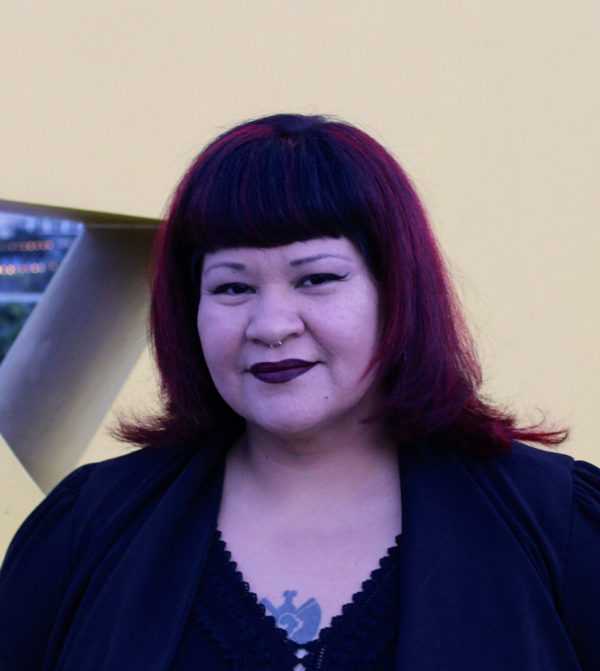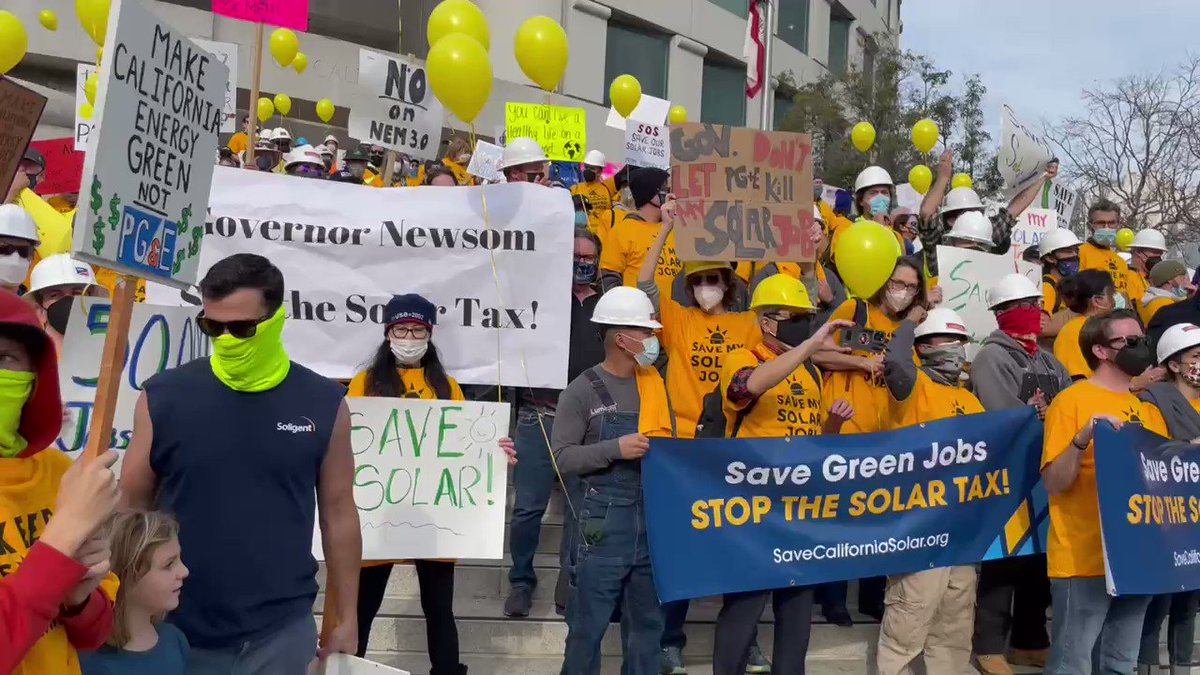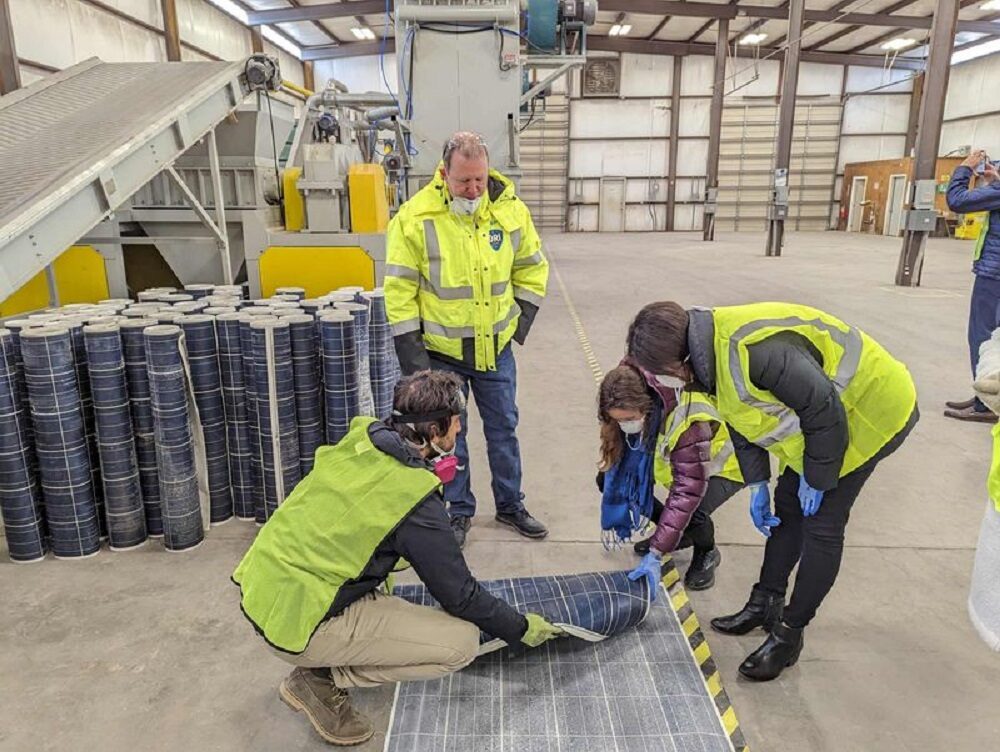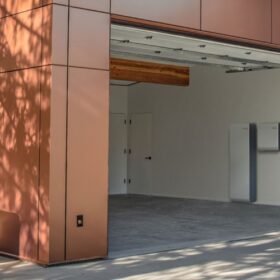Once again, the California Public Utilities Commission (CPUC) is trying to kill off net metering, which compensates owners of rooftop solar energy arrays for the local clean electricity they generate and export to the grid. The CPUC’s latest proposal, dubbed NEM 3.0, replaces a proposal that received an avalanche of community criticism earlier this year. Now, the CPUC is back with what it is advertising as a new approach, but it’s still a threat.
Don’t be fooled, NEM 3.0 is another attack on net metering in California, designed to further enrich the state’s corporate utilities. SoCal Edison, SDG&E and PG&E see the value of our solar sector, and they do not want to share that value with everyday Californians. We must not allow utilities to colonize our emerging clean energy future — to control our solar energy — by hoarding profits and power.
Utilities know that if they can game the system so that they are the only ones who can afford to generate solar energy, we Californians will have to keep paying our rising utility bills and covering the costs of their infrastructure failures. Just like the CPUC’s previous proposal, this plan would be disastrous for locally produced solar energy and harm people of color and other vulnerable communities who want access to local solar and jobs.
The CPUC must stop trying to kill off rooftop solar by making it too expensive for average people and completely out of reach for frontline communities in particular. The CPUC must stop its false claims that frontline communities are overburdened with energy costs because of “cost shifts” from utility-free solar generation. 
Ratepayers are indeed overburdened, but it’s not our neighbors with solar who are at fault. We are overburdened by corporate utilities that pile additional costs on ratepayers, from bailouts for utility-caused wildfires, to hefty pay and benefits for corporate heads. These utilities prioritize profits over managing their own transmission infrastructure and adapting to the demands of a clean-energy future.
As a longtime environmental health and climate justice organizer, I bear witness to the horrors of families and workers who have borne the brunt of environmental racism. From gas-fired power plants to waste incineration, we pay for dirty energy with exorbitant utility bills, with our health, and even with our lives. While we struggle to make ends meet, the utilities have no qualms about leaving our communities in the dark.
I urge the CPUC to expand net-metering and ensure equitable access to clean, renewable solar energy for all Californians. Frontline communities in particular want the opportunity to produce a healthier utility system that also helps build local wealth and clean energy jobs. It can do this by incentivizing and expanding community-owned and community-based models like shared solar, virtual net energy metering, and solar cooperatives. We also need microgrids of island-able solar generation, and energy storage that can keep the power on during crises, blackouts and power shut-offs.
We refuse to continue to prop up the failed corporate-controlled dirty electricity sector — the same sector that has perpetuated environmental injustices that make us sick, drain our bank accounts, and sometimes even kill us through pollution, utility fires, and the growing climate crisis.
California must ramp up incentives that advance local clean energy solutions and undo the legacy of environmental injustice. Our low-income communities of color are not sacrifice zones for pollution, utility wildfires and climate chaos. Nor are they bargaining chips for multi-billion-dollar corporations.
I urge the CPUC to do the right thing and scrap NEM 3.0. Locally generated clean energy is true clean energy. We demand clean power by the people, for the people.
Jessica Guadalupe Tovar is an Energy Democracy Organizer for the Local Clean Energy Alliance and Coordinator of the East Bay Clean Power Alliance.
The views and opinions expressed in this article are the author’s own, and do not necessarily reflect those held by pv magazine.
This content is protected by copyright and may not be reused. If you want to cooperate with us and would like to reuse some of our content, please contact: editors@pv-magazine.com.








I thought the CPUC voting meeting for this topic was yesterday, July 14? So isn’t this a done deal? Or did they delay the vote again? And, if so, when is the next voting meeting?
Thank you both, for your investigative work on the money history of commercial utility scale solar energy development in CA. Here, in NV, there is interest in building modular, fitted, flexible “microgrid” projects, inside town borders, in neighborhoods and business districts. (Newer photovoltaics and storage, work together at night, in winter and, now, in low-angle light of higher latitudes). We are also seeing more understanding of the careless mistake we voters made, in passing NV SB 358 – written by international corporate energy developers, who secure laddered ROWs for legally damaging irreplaceable, publicly owned, wild desert, successfully using – my opinion – flimflam “Green” against Green, itself. NV SB 358 needs to be recalled, “reconsidered” and re-written. Actual Green, was supposed to start with “First, Do No Harm” – that has been ignored here, in the big speculators’ rush, by the 1872 Mining Law/1976 FLPMA-culture DOI.
We deliberately voted for panels on all built surfaces. Instead we got destructive, utility scale commercial “large array” infrastructure, sited on remaining “biological refugia” Mojave Desert wildlands. The strong affinity here, for local people being able to independently produce, store and use clean solar energy, on “in-fill” private property, was growing faster 3 yrs ago. There were many applications for permits, and happy builders wanting to “add” weather-proof, structurally stout, water-efficient, ADUs, modular “shed”-to-small-house conversions, – until Nye Co. changed the building code to preclude them, in all the effective ways. Smallholders’ desert-customized dwellings are always a threat to Big Realty, by their being small, usually self-reliant, often handsome, efficient, not watergrabby, not meant to enrich a tax district or monopolistic power company.
Now we are trying to help keep 30-40 yr use lifespan “large array” infrastructure sprawl (just as its 1976 FLPMA thinking and engineering are timing out) – from being sited, above- and below-ground, destructively, upon perfectly engineered and maintained habitat for adapted wildlife.
The Mojave Desert, a large part of the northern half of the western hemisphere – is a high-functioning, water-banking ecosystem – dependent on the continuous natural life cycle activity of the desert tortoise and ancient yucca populations. We will do what we can, to help microgrid solar grow where it is needed, and it is – in modern times – imperative to stop permitting for corporate “large array” projects to be built on Last Stand wild desert.
No part of the Mojave Desert was or is “free”, “unlimited” “wasteland”.
“I urge the CPUC to do the right thing and scrap NEM 3.0. Locally generated clean energy is true clean energy. We demand clean power by the people, for the people.” . . . Otherwise, Californians should urge Governor Newsome to get rid of these appointees and find ones who actually WILL do the right thing ASAP.
Solar only makes good economic sense for EVERYONE at the Utility Scale. Otherwise it’s limited to a minority of customers who own suitable shade-free rooftops with the mean$$$ to inves$$$t in 4X more costly and 50% less efficient fixed-tilt PV Arrays with 5 to 10 year break-even paybacks. Phase out of FETCs/ITCs in 2024 will extend them 22%.
Rooftop solar was a seed planted in 2005 with the 30% FETC that few initially took advantage of until cheap China made Solar Panels became readily available.
Reality is, NEM-Solar eliminates most renters, condo owners, especially multi-story residents from becoming PV Owning customers regardless of its T&Cs. That’s where anti-solar activism is arising from with overly exuberant save the earth from whatever…except other cheap wretched excess from China that used to be Made in the USA.
Since the sun doesn’t shine at night, fossil fuel and nuclear must still be relied on for steady power 24/7/365 especially when hydro, wind and other renewables fall short of demand.
Utility haters never had to install or climb power poles or towers to string or repair transmission and distribution wires. While power poles look like they’ve been there forever, they haven’t and they don’t grow from the ground with wires attached to power generating waterfalls or windmills either.
Billion$$$ of dollars from individual investors grew our nations power companies (railroads, airlines, car manufacturers and more) and they expect and deserve reasonable returns on their investments for the dependable services and goods they’ve financed, just as Starbuck’s shareholders do (SBUX: 2.65% Dividend Yield).
Residential solar reduces utility revenue one-for-one with its percent of residential customer base penetration while increasing fixed and variable load balancing costs that fall on non-solar customers who are becoming less tolerant of free NEM-Solar kWh or credits for same that they ARE paying with higher fees and rates. Especially where high rates and multiple gov’t incentives have encouraged large percentage of rooftop solar penetration vs other states like Florida where my rates have been low and flat since 2014, and my NEM-Solar system continues to enjoy full kWh per kWh bill reducing ENERGY CREDITS since its 2015 turn-on, thanks to Gov DeSantis’ veto.
Unfortunately, providing power to California’s growing populations in arid flammable landscapes and forests has made matters worse because it’s impossible to safely remove underbrush by controlled burns, or without infuriating tree huggers or eco-maniacs protecting snail darters or brown spotted owls where sprawling urban communities should not be developed in the first place.
Heaven forebid, polar bears immigrate from melting polar ice caps to San Fransisco’s Fisherman’s Warf before the next glaciation 60,000 years from now. Two mile thick ice will bury rooftops, solar and windmill farms and anyone hanging around to operate them…until solar energy melts them for another do-over.
It’s clear, too much rooftop solar is becoming a bad thing where it lacks a well integrated plan to balance its costs and benefits fairly among all solar and especially NON-solar customers who receive (via “path of least resistance” with no say in the matter) and PAY FOR excess NEM-Solar. Without them, NEM-Solar would not be viable, plain and simple.
The better solution is rapid build out of Utility Scale Solar to sustainable levels (average 24% capacity factor share of US’ total production) in order to provide ALL electric customers a fair share of solar’s lower cost and less polluting energy compared to fossil fuels. Then see where that REALLY takes us in 10 to 20 years, despite today’s overly politicized earth saving hype.
Rooftop solar reduces extra distribution infrastructure by distributing energy throughout communities, saving utilities the cost of adding more substations and high voltage transmission lines as well as reducing the number of power stations that will need to be built. Talk about “overly politicized” – that was one very long highly politicized rant. And, of course, we don’t want to mention the overly politicized anti-environmental hype from the Unhinged Right Wing of what used to be somewhat of a decent political party but that now has lost its conscience and morals and is actually anti-solar, anti-wind, and all for drilling and burning as much fossil fuel as possible while the former president actually said living near wind turbines causes cancer.
Dan, Sounds good, but unless that UTILITY infrastructure is already there, you’d need extension cords between solar neighbors’ and non-solar neighbors’ homes. Then extension cords up a turtle’s nose will be next…😜
Besides, when night happens, utility power is still supplying everyone, except a few richies with three or four power walls that can provide days of whole house power at 100A+ main breaker panel capacities.
For a 200A main, plan on a few more PWs or several Powerwall-2s, ~$20,000+ and 6yr paybacks. Like paying ten years of electric bills in advance, hence the tough sell, especially to older folks. Several dark stormy days and you’re in the dark at noon without utility power.
Better off buying shares of DUK instead*, paying 3.8% yield with nothing to install or maintain.
Batteries make no sense to me. A generator is a much cheaper alternative for brief and infrequent outtages.
Putting $40,000 in DUK (cost of 10kW rooftop with a Powerwall) will return $1,500/yr or $125/month off whatever bill(s) you want to apply it to. And unlike batteries, DUK shares won’t need replacing in 10 years.
Worst part, at End of life for panels, inverters and batteries, your solar assets are worth Recyclable Zilch. While DUK shares are still worth $40,000, or much more with long term growth as stock history shows.
https://www.google.com/search?q=duk+stock&client=ms-android-verizon&ei=xu5yYsO3DLm4qtsPyIWw0AQ&oq=sdukstock&gs_lcp=ChNtb2JpbGUtZ3dzLXdpei1zZXJwEAEYADIECAAQDTIECAAQDTIECAAQDTIECAAQDTIECAAQDTIECAAQDTIECAAQDTIECAAQDToHCAAQRxCwAzoHCAAQsAMQQzoGCAAQBxAeOgoIABCxAxCDARBDOgQIABBDOggIABAHEAoQHkoECEEYAFDQElj2ImDhP2gBcAF4AIAB8AGIAewGkgEFMC40LjGYAQCgAQHIARHAAQE&sclient=mobile-gws-wiz-serp#scso=_XQF0YqHxG422qtsPnOObyA873:0
*Same for most well structured portfolios of investments, which can also provide tax free returns for shares held in a Roth IRA.
For those with limited savings, individuals can also buy $10,000 worth of U.S. Treasury I-bonds per year currently paying 9.625% annual greenback dividend, also nothing to install.
Yes Dave, that’s great – support Duke Energy who’s over 22% dirty coal and 36% fracked gas while they continue trying to greenwash their dirty image. Continue to ignore the real science and the vast majority of climate scientists that confirm that our quickly accelerating climate change is due to humans burning tremendous amounts of dirty fossil fuels, spewing billions of tons of CO2 into our atmosphere, since the industrial revolution began. The rate of CO2 increase is faster than anything found in the ice core and fossil records which make it extremely dangerous. It’s like the tobacco executives telling their baldfaced lies that smoking doesn’t cause lung cancer. It’s obvious that the CONSERVATIVES are desperately trying to CONSERVE the status quo and keep the money flowing in from dirty fossil fuels using pseudoscience and fringe whackjobs spewing nonsense about renewable energy. But who cares? If we can make money right now and live it up, who cares that our grandchildren and their grandchildren will be left to deal with the whole disaster we created for them. Who cares? Invest in Duke! Party on!
I am not an engineer, finance expert or photovoltaics expert, but I am sure – at present – the article’s calculations for government and private costs, are right in their proportions, regarding how much money it will take to run households, cars and industry, if we all continue to consume in the ways we are told we should like to.
Actually important biology concerns and geophysics, of producing and delivering clean water, food, all necessary building, waste management, transportation are almost never figured at whole cost, only at cheapest cost – both – to accommodate the wealthy, and we who rent. The usual (1976 FLPMA-culture) obvious solution: cut environmental protections. Nothing’s in the way, nothing’s able to fight back, and good riddance to anything able to run away, just go now, and don’t come back. Until the lease is over. Everything here, is fine.
Dealing with inevitable science and industry evolution and innovation coming in, and changing – all that – out from under our planning will not happen – only – to very massive, inflexible, commercial utility scale solar “large array” infrastructure, before the end of it’s 30-yr use life.
Change will keep us always in catch-up mode, with our microgrid investment commitments, too. But, sited close and central to its consumers, microgrid can adapt faster, more effectively, efficiently: it can be easier to monitor, maintain, upgrade. Or replace, reconfigure, relocate. Site security is easier, day & night, all weather; microgrid is less vulnerable to running wildfire, or becoming itself, a fire hazard. If a one station needs emergency work, parts, there is no dependent, undetachable network to be also interrupted.
The effect of “large array” tech and infrastructure being built on the wild desert, and used briefly until it is uncompetetive (the tech already now timing out), goes against the change we have said we – are – willing, realistically, to pay for. We voted in Nevada, for “Green” NV SB 358, written, (unnoticed by us) for international financiering renewables corporations, who are turning it against Green, itself. Instead of solar panels on all built or disrupted surfaces, we got: Unwanted, soon unnecessary, 30yr use commercial, vastly paneled-over landscapes, utility scale towers, lines, storage construction, stations and substations – and Realty’s dream, The Roads – siting onto remaining Last Stand Mojave Desert wildlands. That kind of land use in wild “biological refugia” open spaces, is monumental waste, irretrievable loss, of a world-scale irreplaceable, irreparable functioning ecosystem. All for a timing-out, failed, perpetual money machine business concept.
So, if change is going to happen, faster, and more often, people probably want to keep their strong microgrid options, and therein, also keep the ancient, worthy permanence of their one irreplaceable Mojave Desert wildlands.
No part of the Mojave Desert was or is “free”, “unlimited” “wasteland”.
Thanks for the space, and information.
I have an off-grid solar system with batteries, and I do run extension cords to my neighbors’ homes to tun outdoor lighting for them and provide emergency back up when needed. I am a retired IBEW inside wireman and built my own system with my own expertise. I also have a Tesla Solar Glass Roof that I had installed when my roof needed replacing. Both systems work well but I like my off-grid system because it is always on even when the utility power shuts down. You are correct in that NEM-2.0 needs to be tweaked so that the users of rooftop solar systems will also pay into the infrastructure that makes their systems possible while using the grid as their battery.
However, in Vermont, they did this by just giving 80% credit for every Kilo Watt Hour placed on the grid that the homeowner does not use immediately in their home or Electric Vehicle. The homeowner gives 10 kilo watt hours in the summer for 8 kilo watt hours they get back in the winter. The utility gets the other 2 kilo watt hours to sell to cover infrastructure costs that are not related to long distance transmission.
The CPUC wanted the homeowner to give the utility 10 kilo watt hours and get back only 2 kilo watt hours in the winter. This would require a system 5 times bigger than what the home needs. They also wanted to gift the utilities with a monthly fee collected from rooftop solar adopters of $8.00 per kilo watt per month of solar installed. A fee that would cost more than the original solar system contracted price over 25 years. IE. 8X8X12X25 = $19,200.00 or more than what the system would cost after the 26% federal tax credit. IE. $24,000.00 X.74= $17,776.00. With those added fees and costs, rooftop solar would only be affordable if one went totally off grid or purchased and ran on a LP gas or gasoline generator 100% of the time. I proposed a two for one value with 200% of the before solar use installation so that a break even cost point of 15 years instead of the 7 1/2 years currently for rooftop solar in California. But, as you pointed out, the money invested in the stock market would double in less time so who would invest in solar? NEM-3.0 would be a grid-tied rooftop solar killer and they all know it. All future rooftop solar systems would be like my first system with extension cords and batteries and cutting out the utilities all together.
Edward, in regard to your comment about Vermont – “The homeowner gives 10 kilo watt hours in the summer for 8 kilo watt hours they get back in the winter. The utility gets the other 2 kilo watt hours to sell to cover infrastructure costs that are not related to long distance transmission.” – why can’t every state put this logical and sensible plan in place? Monopoly corruption? Something else?
I am so frustrated that fossil fuel interests and the GOP have managed to slow or kill any public funded attempts at renewable energy production. The one place where my investment will directly impact my carbon footprint is by my personal investment in solar panels and an electric vehicle. The utilities with help from the CPUC want to kill residential solar, a successful effort away from climate change. Solar is working now. When will utilities stop using fossil fuel? In 2050, 2100? This is something I can do NOW, so don’t f*** it up.